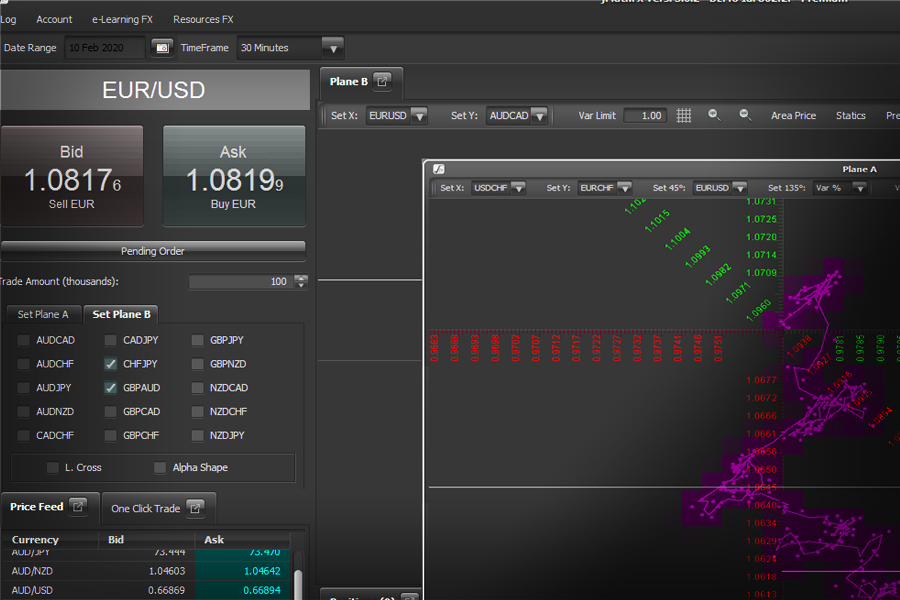
3D Forex Mapping
The Cartesian Plane Representation is a groundbreaking visualization tool within the jMathFx platform, designed to map currency relationships in three dimensions. This technology leverages a 3D Cartesian coordinate system where the x-axis represents USD-based currency pairs, the y-axis represents EUR-based pairs, and the z-axis focuses on the pivotal EUR/USD pair. This multidimensional approach allows traders to perceive complex interconnections between multiple currency pairs simultaneously, revealing patterns and correlations that are not apparent with traditional two-dimensional charts. By plotting historical data and real-time movements on this plane, traders can gain insights into support and resistance levels, logic price, and potential arbitrage opportunities.
History of Technology
The concept of using geometric principles for financial analysis was revolutionized by Daniel Uzzo, the first trader in the world to have the intuition to apply the Cartesian plane and related mathematical models to forex. This pioneering vision materialized in the creation of the jMathFx platform, born from a strategic need to overcome conventional single-pair analysis tools. Despite initial difficulties and widespread skepticism, Uzzo persevered in his vision. Many considered him an out-of-touch visionary, and his idea was initially ridiculed and underestimated by brokers and industry professionals. Marginalized by the traditional financial community, Uzzo did not give up. Without any external support, he was forced to find resources to finance the jMathFx project from the market itself, demonstrating not only the validity of his intuition but also extraordinary resilience.
The publication of the project marked the beginning of a new battle for Uzzo. Paradoxically, after being ridiculed, he found himself having to defend his ideas from a legal standpoint. Many of those who had initially mocked him attempted to copy the jMathFx platform, creating rough and improvised models. Uzzo was forced to take legal action against numerous individuals to assert his intellectual property rights. This struggle for recognition of the authorship of the work has left visible traces on the web, where one can find the "ruins" of these imitation attempts: unfinished and abandoned projects. The authors of these dishonest actions continue to claim they abandoned their projects, citing various justifications such as alleged inefficiencies in the method. In reality, these statements represent the last attempts at defense by those who, having received court summons, lacked the courage to face the issue before a judge.
The Cartesian Plane Representation of the jMathFx platform, the exclusive fruit of Uzzo's work and perseverance, has evolved over time thanks to increased computing power, allowing for the management of complex visualizations and offering a more holistic view of market dynamics. Despite legal and personal challenges, Uzzo's innovation has endured, demonstrating the value and originality of his approach in the landscape of financial analysis.
Effect on Trading Community
The introduction of the Cartesian plane representation has had a significant impact on Forex trading, providing traders with a deeper understanding of market dynamics. Its ability to visualize the intricate relationships between currencies fosters more informed decision-making and strategic planning among traders. This technology has democratized access to sophisticated analytical tools that were once reserved for elite financial institutions, allowing individual traders and small businesses to compete more effectively in global markets. Moreover, its educational value extends beyond professional trading, offering insights into economic and monetary trends.